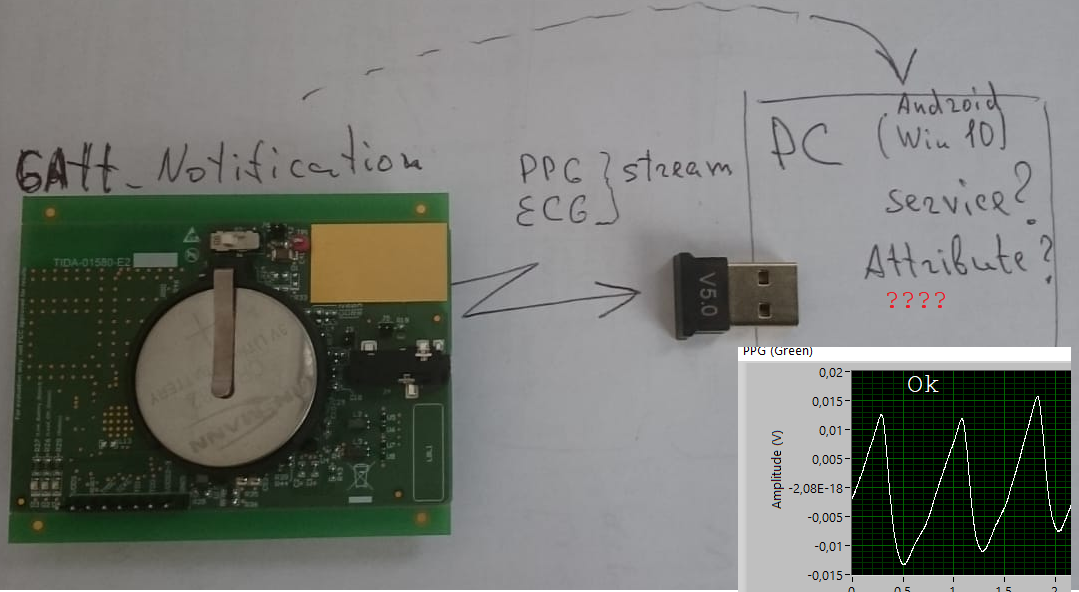Other Parts Discussed in Thread: CC2640, AFE4900
Hello,
I have a working instance of TIDA-01580.
I need to write data acquisition from an ADC on a Windows 10 platform Microsoft Visual Studio using Qt.
I can connect to TIDA-01580 and open the service,
but which one? How do I read ADC data?
TIDA-01580 contains services, and services contain characteristics. Where can I find a description of the characteristics.
Maybe there are some materials with a description?





